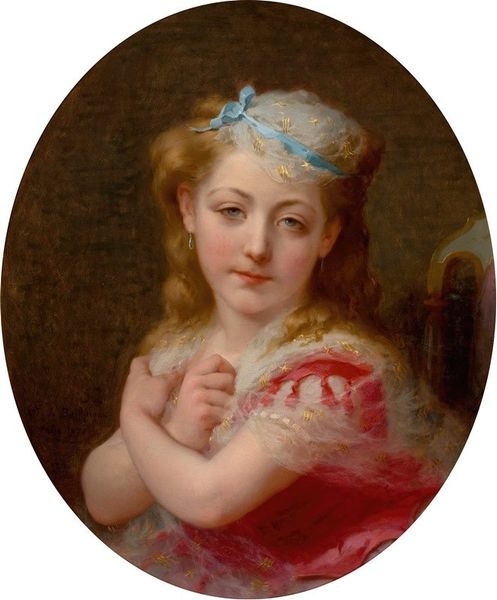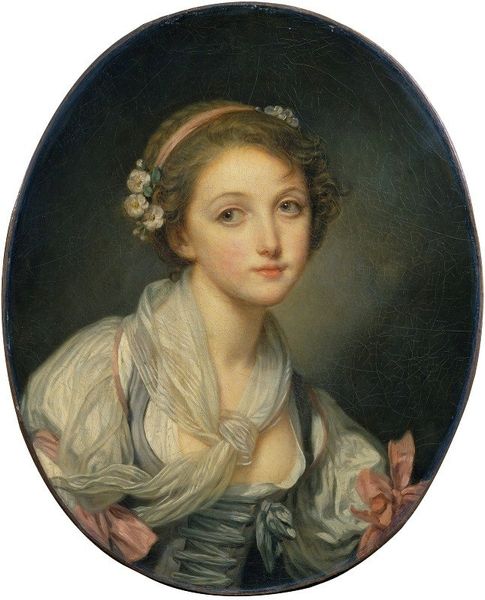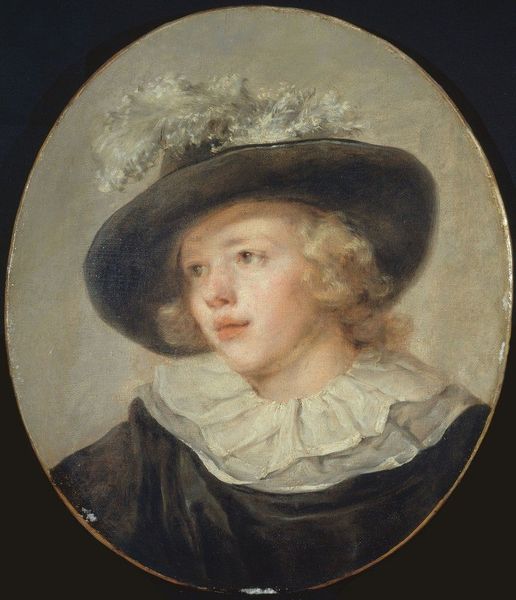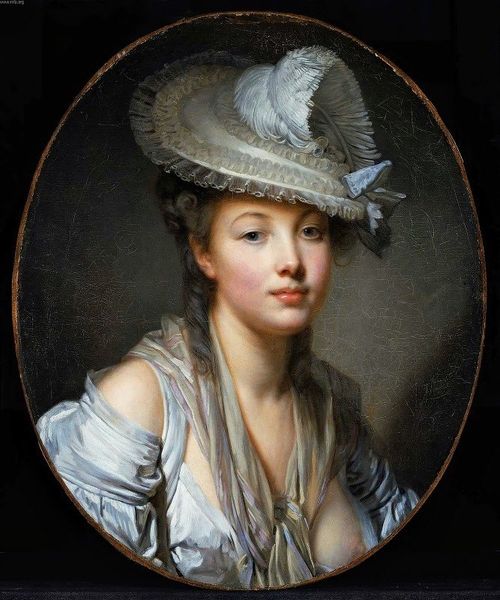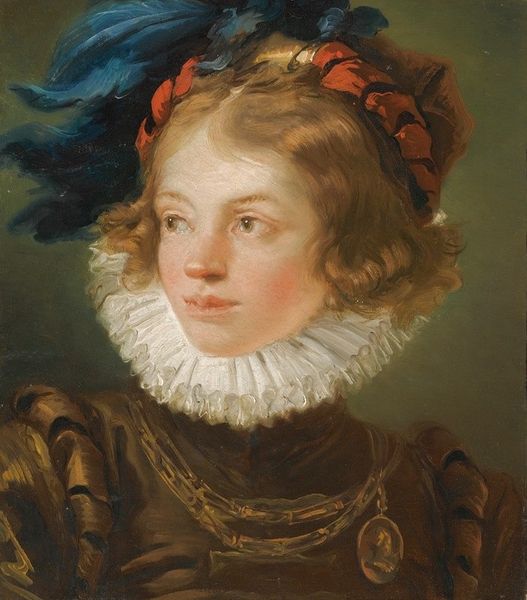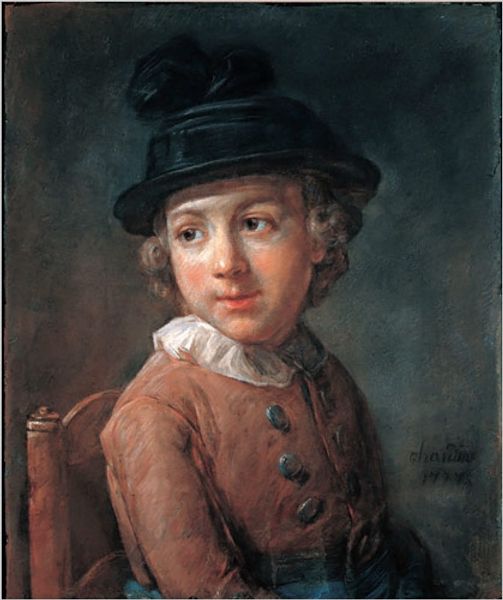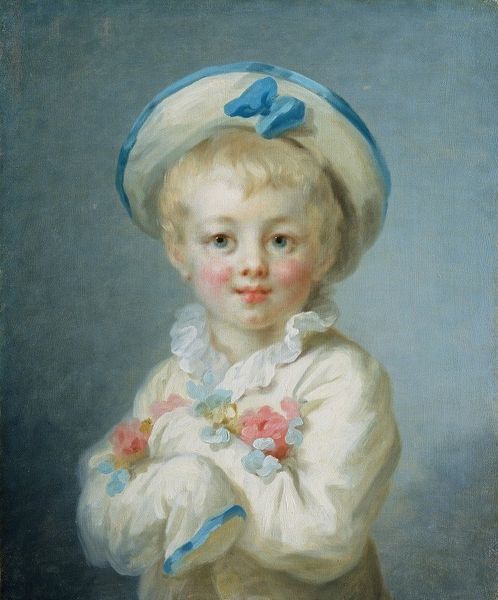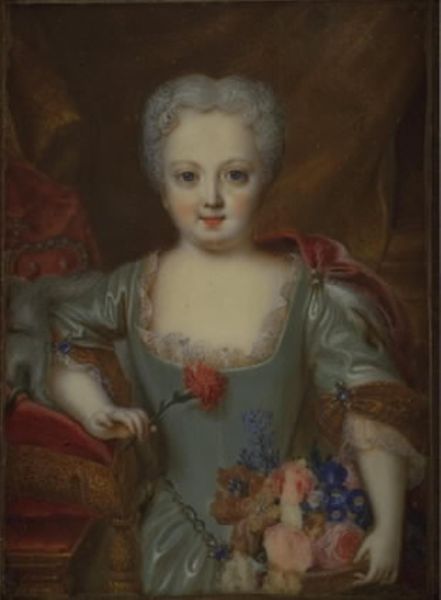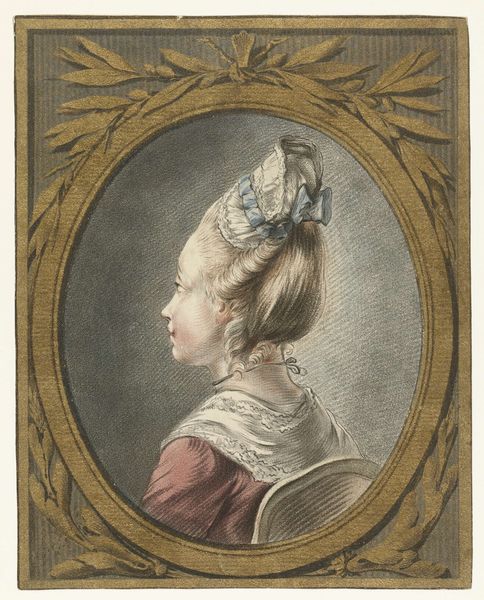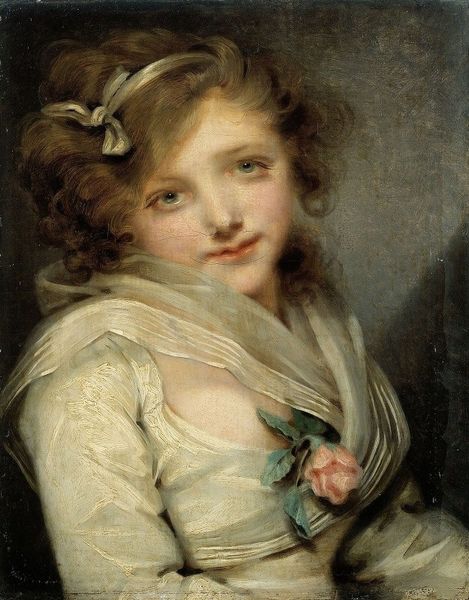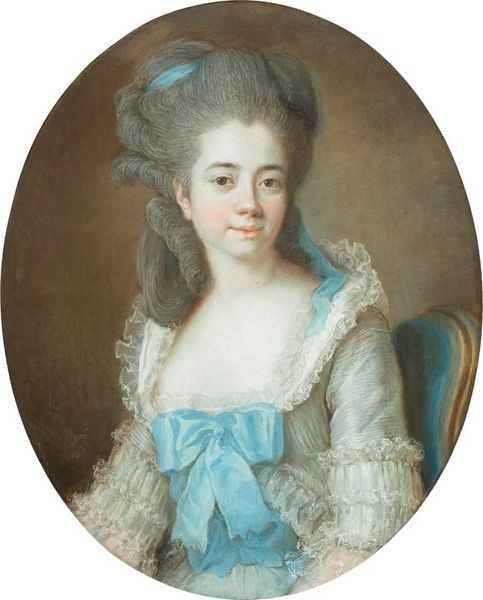
painting, oil-paint
#
portrait
#
figurative
#
painting
#
oil-paint
#
figuration
#
oil painting
#
portrait head and shoulder
#
framed image
#
underpainting
#
genre-painting
#
academic-art
#
portrait art
#
fine art portrait
#
rococo
Copyright: Public Domain: Artvee
Editor: Here we have Jean-Baptiste Greuze's "Boy with a Dog," from around 1757, rendered in oil paint. It feels incredibly intimate, almost like we're peering into a private moment. The dog looks like it’s trying to give the boy a kiss. What stands out to you about this piece? Curator: Ah, intimacy is exactly the right word. It's as if Greuze has bottled that tender connection between a child and his pet. Have you ever noticed how the dog's gaze mirrors the boy's, almost reflecting his innocent curiosity back at us? But it's more than just a sweet scene; it's a carefully constructed image, isn't it? Editor: Constructed? How so? Curator: Well, think about the way Greuze uses light and shadow, almost theatrical. The boy's face is bathed in light, while the background melts into obscurity. What does that tell you about what Greuze wants us to focus on? Also, the somewhat posed quality, where the composition might feel a bit...artificial to our modern eyes. Editor: I see what you mean. It directs our gaze straight to the boy’s expression. Curator: Precisely. And that striped outfit – fabulous, right? It anchors him in the world, giving him a tangible presence while still letting the emotion shine through. It is, I believe, a study of youth teetering on the edge of adulthood, draped in sentimentality that the Rococo period seemed to adore, as dogs slobbered. Editor: It's interesting how that balance makes the artwork feel more… alive. Curator: Isn't it though? The dog's wet, lolling tongue seems a brilliant flourish of capturing that raw spirit of vitality. It really highlights how technical artistry meets genuine feeling, a recipe every artist secretly tries to follow. What do you make of it now? Editor: I will be looking at 18th century dog portraits through completely different eyes now!
Comments
No comments
Be the first to comment and join the conversation on the ultimate creative platform.

